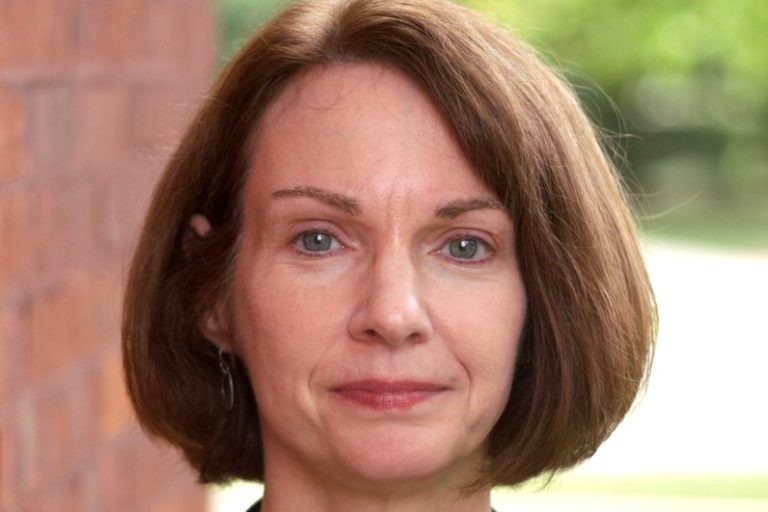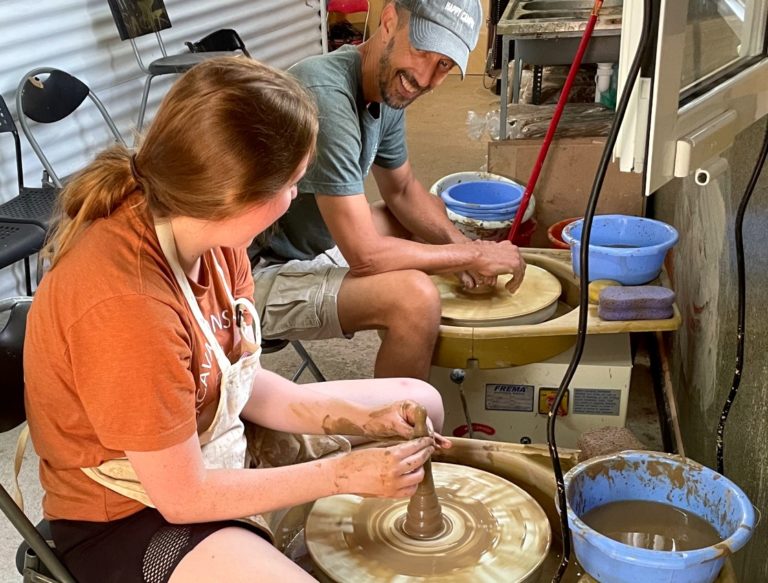Blaire Morseau grew up in New Jersey and spent most of her life there, including her undergraduate years at Rutgers University, yet she considers Michigan her home.
As a citizen of the Pokagon Band of Potawatomi Indians, which is based in Dowagiac, Michigan, Morseau spent many summers in the Great Lakes State where she attended powwows and worked at various internships. She also served as her tribe’s first full-time archivist following graduate school.
Now an Assistant Professor at Michigan State University, Morseau is one of two new faculty members in the Department of Religious Studies to receive an inaugural 1855 Professorship. Created by MSU’s Office of the Provost and named for the year the university was founded, the 1855 Professorships aim to advance MSU’s Strategic and DEI (Diversity, Equity, and Inclusion) priorities by transforming the impact made on minoritized, marginalized, and underrepresented communities both on and off campus.
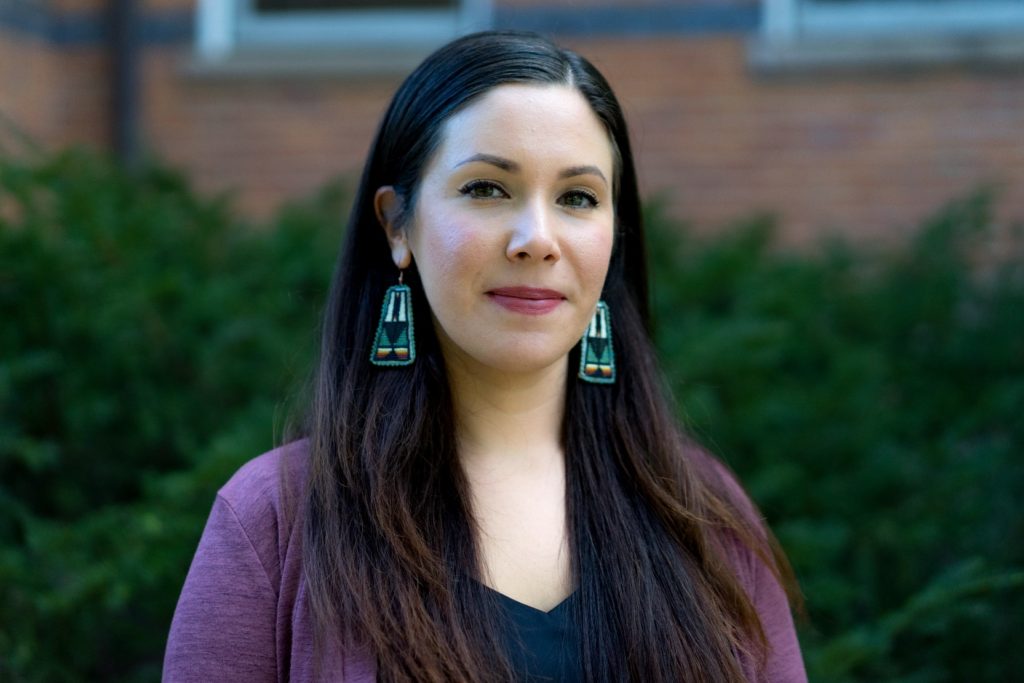
“I always wanted to come back to Michigan and learn my language and be part of my culture and have my son grow up as part of that community. That’s really important to me,” Morseau said. “It’s so difficult when you’re away to have that sense of identity. It’s just not the same attending language classes online and having your kids go to school where there are no other Native people, let alone a Native person of your tribe. So, I was always drawn to come back to this area.”
There are 12 federally recognized Native American tribes located in Michigan, including the Pokagon Band of Potawatomi Indians that Morseau belongs to. The Pokagon are the only Potawatomi band to gain permission from the U.S. government to remain in Michigan after all Natives were forced to relocate to lands west of the Mississippi River in the 1830s. This Potawatomi-speaking tribe occupies tribal lands in southwest Michigan and northern Indiana as well as maintains a 10-county service area. Its tribal government operations are located in Dowagiac.
“The support in terms of startup funds and this named professorship in the humanities is not something I heard of elsewhere. It’s already been super exciting to be able to think about the things we’re able to do with this level of university support. This named professorship is unmatched.”
The 1855 Professorship gave Morseau the opportunity to return “home” and be part of this groundbreaking initiative at MSU. The two 1855 Professorships in the Department of Religious Studies focus on Great Lakes Anishinaabe knowledge, communities, spiritualities, and cultural practices. Morseau calls the positions “unparalleled.”
“The support in terms of startup funds and this named professorship in the humanities is not something I heard of elsewhere,” she said. “It’s already been super exciting to be able to think about the things we’re able to do with this level of university support. This named professorship is unmatched.”
Building a Better Society
November is National Native American Heritage Month, a time to celebrate the rich and diverse cultures, traditions, and histories while acknowledging the important contributions of Indigenous peoples. The 1855 Professorships in the Department of Religious Studies are one way of honoring the great heritage and lasting legacy of Native American communities.
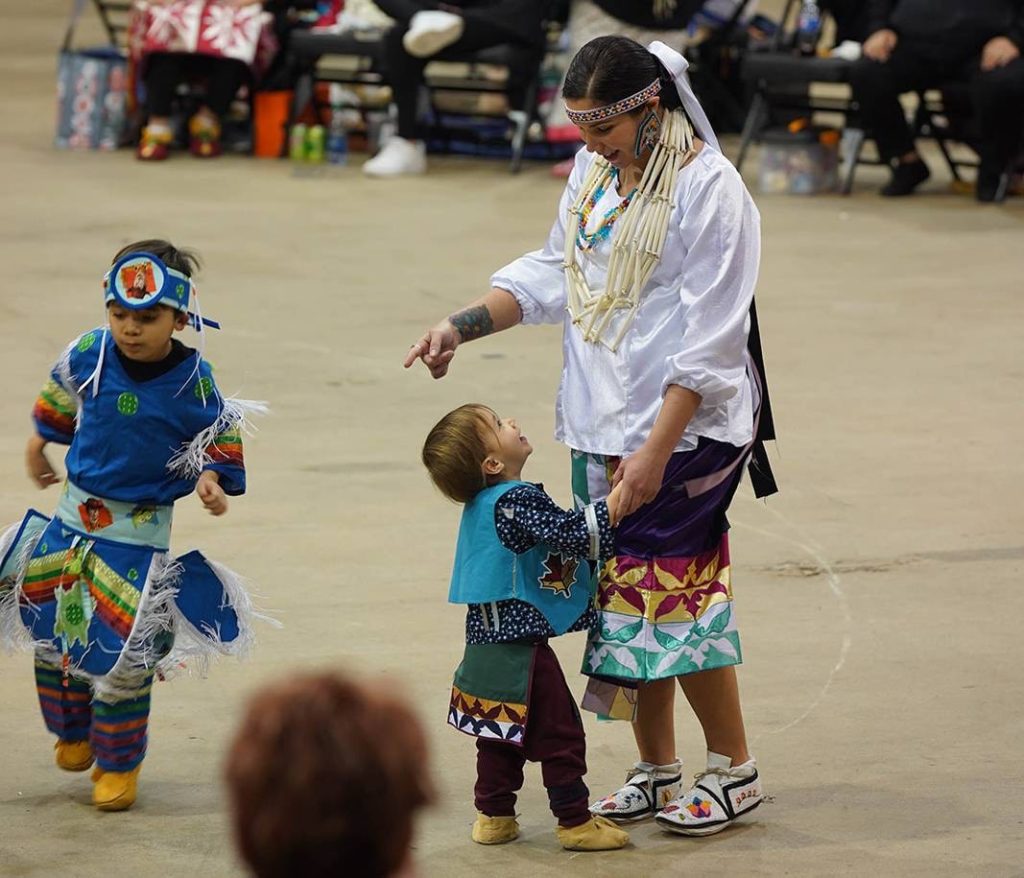
In her first semester at MSU, Morseau is still getting acclimated to her new position and working to shape her vision for the 1855 professorship. She currently teaches two sections of the Indigenous Speculative Fictions and Prophecy undergraduate course.
“Half of the class is a primer on Native peoples. What do we mean when we say ‘Indigenous?’ What are some examples of Indigenous communities around the world?” Morseau said. “The second half of the semester we are taking a deeper dive into what is science fiction? What’s the difference between mainstream sci-fi and the types of speculative fictions that Indigenous peoples are telling?”
“Right now, I’m mainly focusing on being a good instructor and helping folks understand Native histories and experiences, so that we can build a better society and a more mutually beneficial understanding of each other.”
In the Spring 2024 semester, Morseau will teach a class on Native American Religions (REL 306) that will explore the artwork, literature, politics, and other Indigenous spirituality of Native American peoples. The course will feature materials from myth, ritual, and ceremonial life, and ways of obtaining and sharing religious knowledge and cosmological themes.
There are still a few spaces available for this course, which will offer a broad survey of Native American religions in North America while encouraging critical thinking through writing and discussions and by privileging Native voices through scholarly publications, creative works, and cultural expressions produced by Indigenous peoples (instead of just about them).
“By understanding the histories, philosophies, and experiences of Native peoples,” Morseau said, “we can better understand the larger history of North America and what the future may hold for both Indigenous communities and the larger non-Native society who now call this place home.”
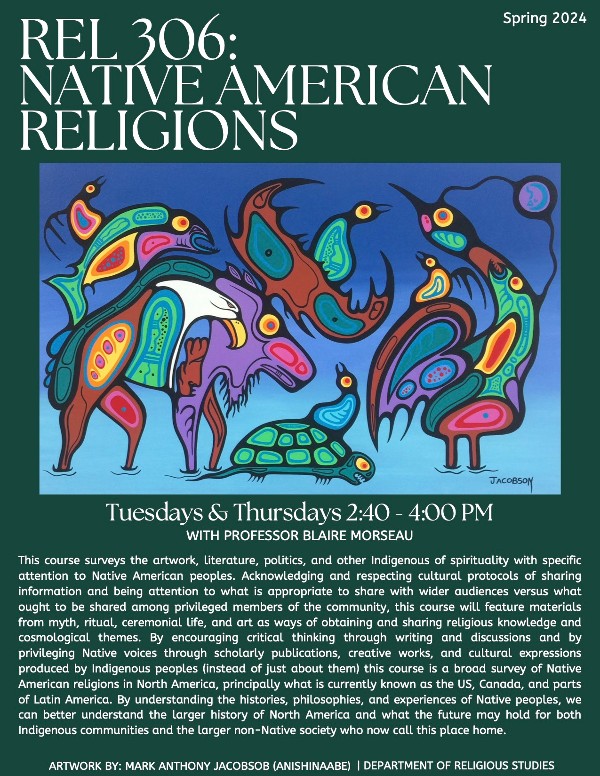
Morseau also has submitted a proposal for a new upper-level undergraduate course in Religious Studies that focuses on Indigenous research methodologies, specifically for the Department’s Nonprofit Leadership, Global Cultures, and Social Enterprise Programs. She says the course is designed to be “very hands-on and a critical lens to the way research has been conducted on Native peoples and in Native communities while trying to take a more ethical, reciprocal approach to that.”
“Right now, I’m mainly focusing on being a good instructor and helping folks understand Native histories and experiences,” Morseau said, “so that we can build a better society and a more mutually beneficial understanding of each other.”
Research in Indigenous Science Fiction and Futurisms
Morseau’s research interests are in Indigenous science fiction and futurisms, traditional cultural and ecological knowledge, digital heritage, and Native counter-mapping. “Indigenous futurism” is a term first used by Grace Dillon, Professor in the Indigenous Nations Studies Program at Portland State University, that describes a movement of art, literature, film, video games, and other forms of media that express Indigenous perspectives on traditional knowledge and culture with futuristic ideas and settings.
According to Morseau, she teaches science fiction and other media made by Native peoples as a means of explaining certain Indigenous politics or histories. This includes both contemporary literature by Native authors, as well as stories that were published more than 100 years ago and are now being classified under the genre of science fiction.
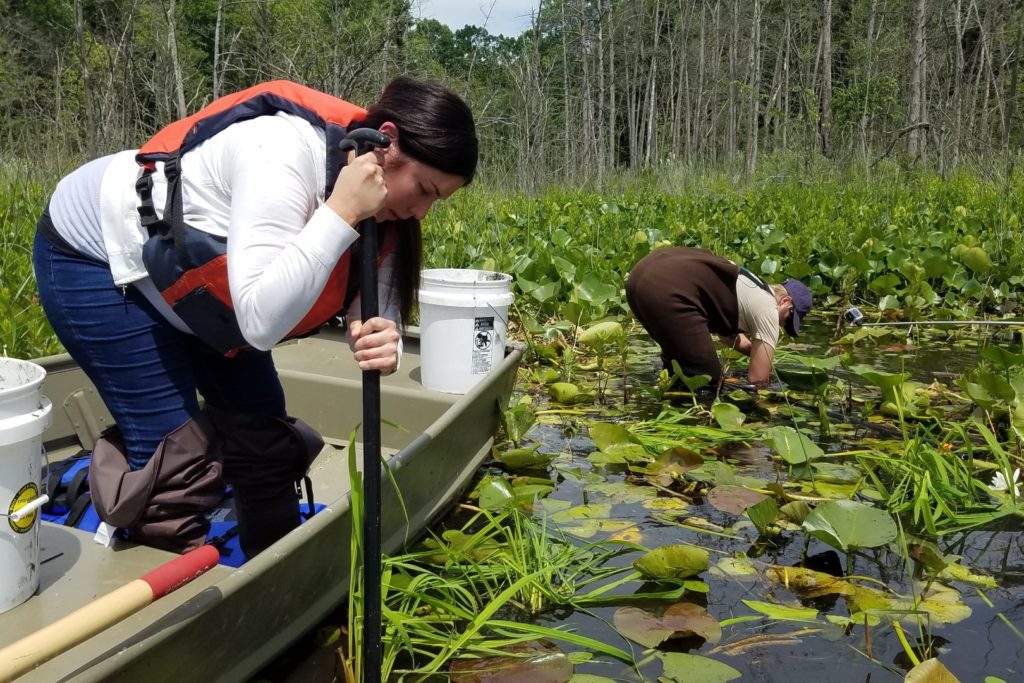
“What this media does is draw from our cultural background, some of which is traditional stories that had elements of sci-fi in them, like teachings about ‘star people’ or different realms of existence, different universes, things like that,” Morseau said.
What makes these ‘sci-fi’ ideas even more interesting is that in some cases, western scientists are examining their possibility. For example, some quantum physicists maintain that the concept of parallel or multiple universes can’t be ruled out. Morseau also points to Potawatomi ethnobotanist Robin Wall Kimmerer’s Braiding Sweetgrass (2013) as another case in point. In the book, Kimmerer examines Native science and other things that Native people have claimed about the natural environment but were scoffed at by scientists only later to be found as correct.
“For example,” Morseau said, “this idea that trees ‘talk’ to each other. Of course, it sounds ridiculous because trees don’t have vocal cords, right? How can they talk to one another? But now western scientists have insights into how trees communicate with each other through their shared root system and fungal network.”
“I see activist political advocacy work as one form of futurity and creative, imaginative science fiction as another form,” she said. “For so long, Native peoples have been seen as primitive or in the past and not as part of the contemporary-modern, and certainly not futuristic.”
Morseau’s dissertation was on Indigenous environmental movements in the Great Lakes region and how they represent a form of Indigenous futurity.
“I see activist political advocacy work as one form of futurity and creative, imaginative science fiction as another form,” she said. “For so long, Native peoples have been seen as primitive or in the past and not as part of the contemporary-modern, and certainly not futuristic.”
Morseau currently is working on turning her dissertation into a book that’s contracted with the University of Arizona. She also has applied to a research fellowship from the Newberry Library that would enable her to study some early Indigenous science fiction writing from the 1930s to the 1970s, exploring how this material might have been informative or inspirational to some well-known, non-Native sci-fi authors like Ursula Le Guin, Isaac Asimov, and others.
“I love doing research,” Morseau said. “I like teaching too. But being in the archives, conducting interviews with community members, and reading, I really enjoy it. And I’ve been really lucky to have the opportunities I’ve had.”
More Projects and Public Outreach
In addition to her research and teaching, Morseau currently is working on a digital humanities project at the MSU Digital Scholarship Lab, which involves uploading Potawatomi knowledge of star constellations onto a digital platform that can be accessible to Potawatomi people as well as astronomers and teachers.
She also just released, in October 2023, an edited volume, titled As Sacred to Us: Simon Pokagon’s Birch Bark Stories in their Contexts, which features the collection of 19th– and early 20th-century birch bark books written by Potawatomi author Simon Pokagon. In addition to the stories themselves, the book, which was published by the Michigan State University Press, has several essays by other contributors that contextualize Pokagon’s work. Pokagon also published bilingually so the book offers some linguist interpretations of the Potawatomi language he used.

“This was an interesting project that really bridges the work I was doing as a tribal archivist to the futurist research that I do now,” Morseau said. “The specific birch bark stories that this book is about are held at Pokagon band tribal archives, which I thought was pretty cool because we don’t often give much attention to tribally held or smaller archives.”
Morseau will give a virtual talk about her new book on Friday, Nov. 17, at 10 a.m. hosted by the William Clements Library at the University of Michigan. To register, go to the William Clements Library website. The Nov. 17 event is part of the many Native American Heritage Month events listed by MSU Today.
Morseau also will give a talk on this book at Michigan State University on January 26, 2024. The details for that talk are still being worked out. When more information on that talk becomes available, it will be shared on the College of Arts & Letters and Department of Religious Studies websites.
Road to MSU
Morseau received both her Ph.D. and M.A. in Anthropology from the University of New Mexico and a B.A. in Anthropology from Rutgers University. She worked in Michigan as an archivist for her tribe from 2017-2020, until she was furloughed during the COVID-19 pandemic.
“That sent me on a totally different trajectory,” Morseau said. “I was perfectly happy there working for my tribe and enjoyed doing work that was applicable to community needs and interests. But then I had to face a real reconsideration about what my priorities were and what I wanted to do. It’s funny how things happen.”
After being furloughed, Morseau spent a brief time as a Public Humanities Fellow at the Newberry Library in Chicago, where she worked on making the Indigenous Studies collection more accessible to Native communities.
Academia then beckoned and she joined the Department of Anthropology at the University of Massachusetts, Boston, as an Assistant Professor in 2021, until the offer of the 1855 Professorship brought her to MSU in Fall 2023.
More on 1855 Professorships
MSU’s Office of the Provost announced the creation of the 1855 Professorships in Fall 2021 and asked for proposals for these full-time, tenure-stream positions. Altogether, 76 proposals were submitted from across the university with every college participating. A competitive review process by a committee of scholars and administrators led to the selection of 13 proposals, including the proposal from the Department of Religious Studies.
The Religious Studies Department originally was awarded one 1855 Professorship. But when they received two exceptional applicants, the decision was made to fund two 1855 Professors. One position is being funded by the Office of the Provost and the other by the College of Arts & Letters.
Together, the 1855 Professorships are reimagining MSU’s foundational land-grant mission to elevate the pursuit of practical knowledge and broaden educational access by supporting inclusive excellence with scholarship and public engagement.
For more information on the 1855 Professorships in the Department of Religious Studies, see the previous article that was published by the College of Arts & Letters titled “Department of Religious Studies Awarded Inaugural 1855 Professorships.”
